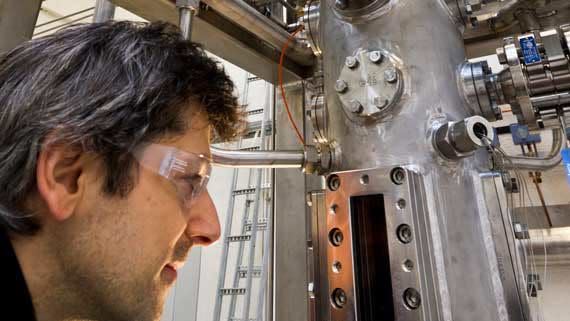Approximately 60% of the world CO2 emissions come from combustion in the energy and industry sectors. To mitigate climate change and maintain an ambitious CO2 reduction target in a fossil fuels dominated society, Carbon Capture and Storage (CCS) must be implemented rapidly. Several technologies have been thought of and developed to capture CO2 from the exhaust of combustion processes.
One of them, called oxy-fuel combustion, is based on burning the fuel with oxygen instead of air. This provides an exhaust with a high concentration of CO2, which makes the capture less energy consuming. This type of combustion is more challenging and less documented than the conventional air based combustion.
The OXYFUN project aims at understanding the microscopic physical and chemical mechanisms of oxy-fuel combustion as it would occur in a gas turbine engine used for producing electricity from natural gas. One particular aspect of interest in such engines is that combustion takes place under high pressure.
The study, in collaboration with NTNU and CORIA - Normandie Université (France), will use a high-pressure facility (HIPROX) and advanced laser-based techniques to make measurements inside the flame (1 post-doc), and numerical simulation tool to model the combustion details (1 PhD). The better understanding of these complex phenomena and the validation of the mathematical tool to predict them will serve the development of efficient and low emission burner systems.
This project is funded by CLIMIT/The Research Council of Norway

